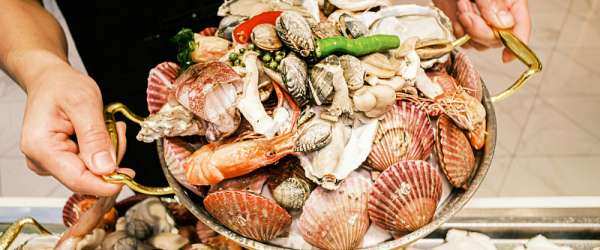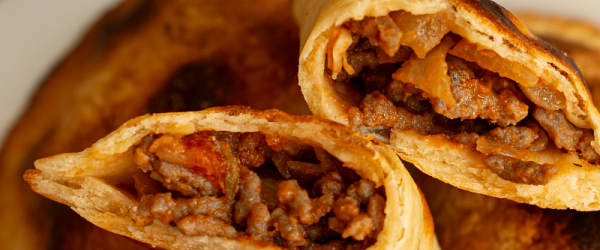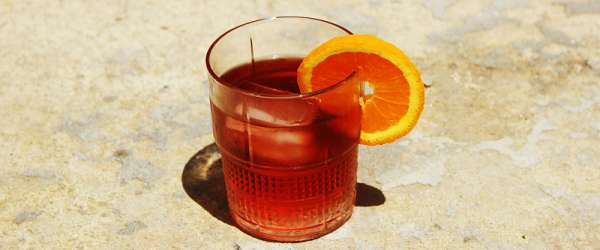Do you know Spanish cheeses?
13. Února 2018
Cheese
What do you think about Spain and cheese? Perhaps the milky taste of manchego, the cheese from Don Quixote County, the harsh La Mancha? Or maybe do you remember the aroma of the hard San Simón Galician cheese or the bosom-shaped tequila? Or do you see the blue mold of the broken cabrales, the famous Asturian cheese?
Spain is a country of cheeses
Likewise, the various Spanish regions are also cheesy cheeses, many of which are labeled with the trade mark of origin - DO (Denominación de Origen). This ensures that it is a certified, quality, legally strictly and regularly controlled product, which can be produced only in the defined area and from certain raw materials, according to a well-defined traditional recipe. Spain is simply a country where every lover of cheese comes to its own. Cheese of sheep, goat or cow's milk. Cheese of different degrees of ripeness. Different flavor and taste. Natural, with herbs, stuffy ... The offer is so varied.
And so if you do not think about the excited cheese or you are not telling the world of cheeses, believe that knowing and tasting the Spanish is really worth it. Let's go together for a culinary journey to discover the most interesting and delicious cheeses that Spain offers.
Asturias
Asturias is a true cheese paradise, because it is registered for 40 kinds of cheese! It is made mainly of three kinds of milk - cow, sheep and goat. Some species are produced in very small quantities and do not get into the shops.
The eastern part of the mountainous area with several hundreds of family businesses is home to the famous blue cabrales (queso de Cabrales) made from three kinds of milk - raw cow and sheep and goat milk in varying proportions. Since 1985, cabrales have been identified as a trademark of DO
Wondering where and how does cheese get its typical noble mold? This is done by depositing in limestone caves, where it is very damp and the temperature does not change over the year (it is around 8-12 ° C), in addition to cave yeasts, bacteria and noble fungi. Cheese matures and the above factors cause the cheese to be converted into cheese. After three to six months, the cheese is perfectly blooming blue mold and is solid. In the past, Cabrales cabbage loaves have been wrapped in damp platan leaves, nowadays, thanks to the European Union's hygiene rules, preference is given to foil with molded platinum leaf.
The reputation of the cabrales cheese has crossed the border of Asturias, and so its relative spicy groggy gamonedo, which is sold only in its area of origin, remains slightly neglected.
Catalonia
The region of fish and seafood, truffles and pasta, as well as fresh unleavened goat cheeses mato, served as tasty desserts with fresh fruit, compote, nuts or honey.
Another tasty Catalan cheese is creamy montsec, otherwise known as cendrat - ash is rubbed into the surface during the ripening of the cheese.
Castile - La Mancha
The dry, flat landscape of La Mancha, in which Don Quixote was seduced by windmills, is a rough, modest, yet rich in some culinary jewels. Mancheese saffron and garlic are world-renowned. Like manchego, sheep cheese, which, according to archaeological finds, was made in La Manche at the time of the stone.
It is made from milk of domestic breed of sheep mancha, which is also used in inhospitable pastures. Since 1984, cheese has a trademark of origin DO Previously manufactured in traditional knit forms. Today, the steel or plastic forms of modern cheeses mimic the traditional relief pattern. About 15% of the manchego cheese is handcrafted in small cheesemakers, and the loaves can be proud of the artesanal. Manchego with this label was made from raw sheep's milk, while larger factories use pasteurized milk. The bark of the loaves of these cheeses is very hard, yellow or greenish black, in case the loaf is squeezed with olive oil.
Manchego
Manchego cheese is offered in several stages of maturity:
Fresco: A young soft cheese with not too much taste, soft and supple. 60 days maturing. Mostly only in the Castile - La Mancha region.
Semicurado: The semicurado designation is a semi-shredded cheese, with a cream flavor. It ages up to 6 months when handcrafted, 2 to 4 months in the case of industrial production.
Curado: Aged for more than 6 months, it has a more intense flavor than the manchego semicurado.
Añejo: Manchego, which matured for 12-24 months. It tastes more spicy, characterized by milk-flavor and yellowish color.
Galicia
Most Galician cheeses are made from cow's milk. Tetilla's tall cheese is characteristic of its shape, which resembles a female breast. After a three month maturation, San Simón is over the pear wood.
Baskicko
Smoked sheep cheese (DO) is produced in this region from high quality, fat milk of sheep breeds. Typical for this cheese is its smell of wood smoke, cheese is over cherry or hawthorn wood, or in large cheese workshops over oak or beech. Enjoy the fragile-to-butter consistency and unique flavor of this ivory-colored cheese.
Navarra
The roncal mountain sheep cheese was the first cheese to receive the trademark of origin. An annual cheese show is held in Roncal Valley in August, where local cheesemakers proudly show their produce. The ripe hard roncal has a spicy taste. Its thin slices are served as excellent tapas.
La Rioja
La Rioja is a renowned wine region where the most famous wine cellars are located. The range of wines is admirably wide, unlike the cheese. Perhaps the only real cheese in Rioja is camerano, a soft cheese of fine taste, made from raw goat milk for centuries. Previously formed into wicker cups, today less romantic plastic cups are used. Camerano can enjoy a meal with either Spanish quince jelly or Rice mountain honey.
Torta del Casar - The Miracle of Extremadura
The province of Extremadura, which borders Portugal, is home to a cheerful miracle called Torta del Casar. The name obtained this sheep's cheese according to the place of origin, which is the town of Casar in the province of Cáceres in the west of Spain. The word "torta" means a cake in Spanish and refers to the characteristic shape of this delicacy.
In the province of Cáceres, sheep's cheese has been produced since the 13th century. Today Torta del Casar is the most famous of them, but his creation was actually a mere coincidence. Once, a cheeseman made a mistake in the production of classic Extremadura sheep's cheese and found that one of the loaves hardened only on the surface and the liquid was inside. He was angry to throw him among the garbage, but his curiosity was stronger. He tasted the liquid and found it tastes extraordinarily well. He realized where he had made a mistake in the production process and could produce the new cheese, which was named Torta del Casar, deliberately. And the appealing taste of Torty del Casar has begun to reap great success.
Torta del Casar is made from sheep's unpasteurized milk, aged for at least 60 days, and is made up of a few cheeses with precipitated vegetable rennet from wild artichokes. It has an intense, slightly salty and slightly sour taste and creamy texture, somewhat similar to that of the French cheeses Brie and Camembert. It bears the designation of origin, DO, which guarantees high quality. This cheese is typical of a solid crust that cuts off the top of the loaf and spills out the spoon.
This cheese is a great appetizer or dessert, and its taste fits nicely with a glass of dry red wine. The combination of Torty del Casar and sparkling Cava Spanish will surely delight your taste buds.
Jste gurmán každým coulem?
Přihlaste se k odběrů Gurmánských novinek a my vás budeme 1x za 14 dní informovat o novinkách ve světě gastronomie, nově otevřených restauracích, skvělých ingrediencích a neskutečně lahodných vínech.



